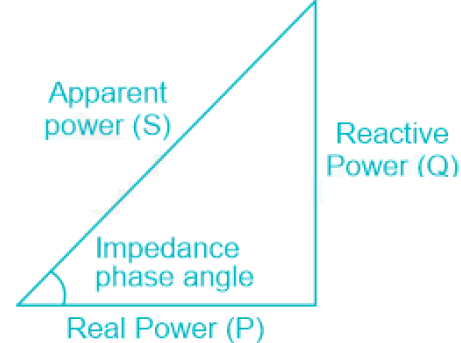The power taken by a 3-ϕ load is given by the expression?
By BYJU'S Exam Prep
Updated on: October 17th, 2023
(A) 3 VLIL cos ϕ
(B) √3 VLIL cos ϕ
(C) 3 VLIL sin ϕ
(D) √3 VLIL sin ϕ
The power taken by a 3-ϕ load is given by the expression √3 VLIL cos ϕ. A single phase system’s power, the power triangle, is depicted as follows:

P = Active power (or) Real power in W = V I cos ϕ
Q = Reactive power in VAR = V I sin ϕ
S = Apparent power in VA = V I
S = P + jQ
S = √P2 + Q2
ϕ is the phase difference between the voltage and current.
Table of content
The power in a balanced three-phase system (for both star and delta connected) is,
Active power (P) = √3 VL IL cos ϕ
Reactive power (Q) = √3 VL IL sin ϕ
Apparent power (S) = √3 VL IL
In a three-phase load, three different impedances are connected together in a star or delta fashion.
In a star-connected three-phase system,
V = √3 × Vph And IL = Iph
Iph = VL/√3 z
In a delta-connected three-phase system,
VL = Vph
IL = √3 × Iph
Iph = VL/z
Where,
VL is line voltage
Vph is phase voltage
IL is line current
Iph is the phase current
Summary:
The power taken by a 3-ϕ load is given by the expression? (A) 3 VLIL cos ϕ (B) √3 VLIL cos ϕ (C) 3 VLIL sin ϕ (D) √3 VLIL sin ϕ
The power taken by a 3-ϕ load is given by the expression √3 VLIL cos ϕ, so option A is correct and rest of the options are wrong here. These questions are usually asked in the competitive exams or entrance exams of reputed institutions.


